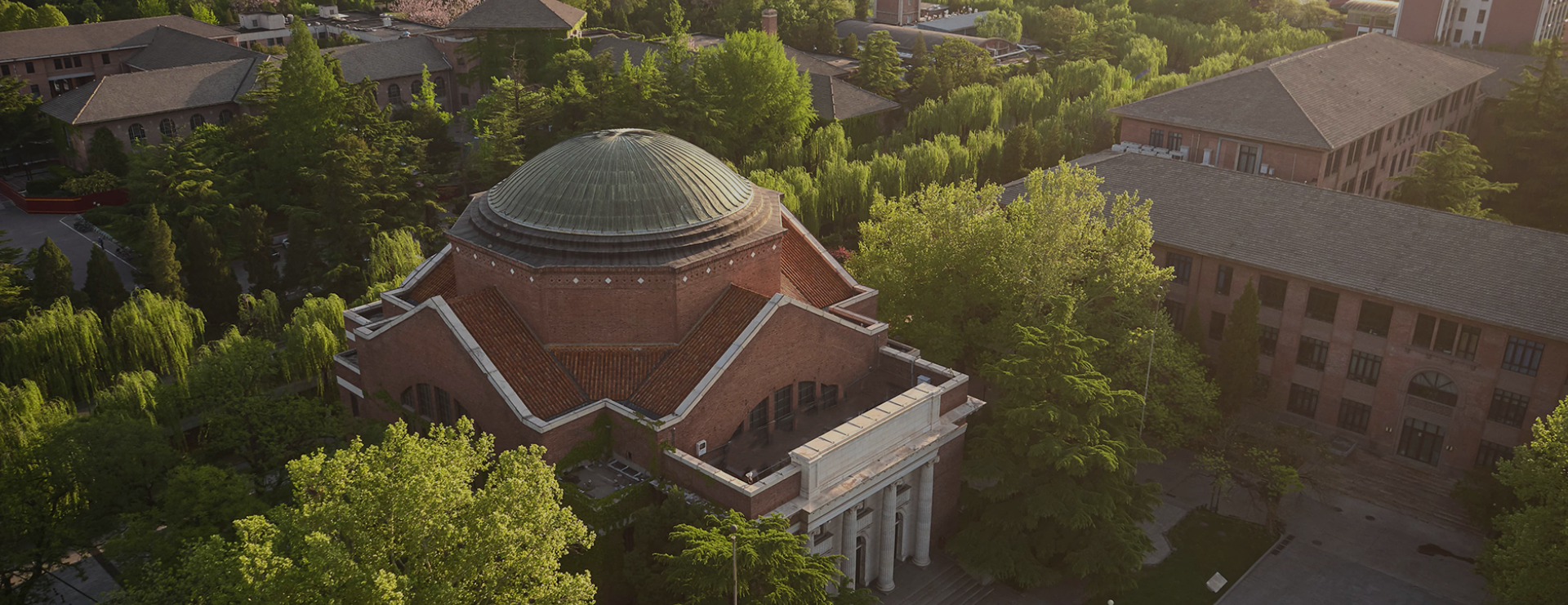On Dec. 17, audiences worldwide toured an online exhibition at the Academy of Arts and Design of Tsinghua University (AADTHU), displaying numerous innovative and avant-garde pieces, such as space capsules, micro-environments, and ocean installations. These works were shown in the Thematic Exhibitions section, created by interdisciplinary workshops, part of the 2022 Tsinghua International Conference on Art & Design Education (ICADE 2022).
With the theme of “The Symbiosis of All Things,” the “Re: Actor International Art & Design Workshops” focuses on the future environment and survival of human beings. Teachers from the painting, sculpture, environmental art design, industrial design, and information art & design departments of AADTHU, together with extramural experts in sociology, oceanography, biology, computer technology, aerospace, and other fields, formed a strong team of tutors. In the five disciplines of artificial environment, marine environment, urban environment, digital environment, and space environment, the interdisciplinary graduate team made collaborative innovations in a four-week intensive work environment.
They integrated art and technology, colliding and exploring new design languages and expressions before finally making a youthful response to environmental and social situations surrounding “The Symbiosis of All Things.” The result was more than 30 artworks in animation, products, VR games, installation art, interactive images, service systems, parametric buildings, and other forms.
In the “Manufactured Environment: The Artistic Translation” workshop exhibition, students from different majors, such as painting, sculpture, design, and electronics, created their own “microenvironment” through painting, pictures, images, devices, and other forms using autumnal elements, such as orange hues and leaves, AADTHU’s professor Li Tianyuan introduced.
The 15 pieces reflect both thinking and practice, artistic creativity and technological expansion, with their artistic creations and technologies echoing and complementing each other.
“Artistic creations have the magic power to improve living spaces and then affect emotions and reshape thoughts so that people can open a window to see the vast spiritual world,” Li said.
As part of the “Ark Plan: Floating Cities and Life” exhibition, visitors could enjoy a floating concert on the ocean, integrating architecture, nature, and music. The installations explore the relationship between humanity and the ocean and also human impact on the ocean. The three works also dissect how seaside residents escape environmental crises and how humans can coexist with new ocean environments, given the significant changes the planet’s climate is facing.
Tu Shan, associate research fellow and senior engineer at AADTHU, said the works integrated different design languages as well as explained, criticized, and reflected on the exhibition theme of the “Ark Plan” from different dimensions, demonstrating the students’ thinking, emotions, and good wishes for the marine environment.
In the “Habitat for All: Biodiversity Around Us” exhibition, four artworks attempt to portray an upgraded future urban environment to protect biodiversity, including building a habitat for bees, shelters for little animals, making ecological transformations to Tsinghua’s waterways, and creating a symbiotic system for plants and humans, AADTHU’s professor Liu Xin said.
“These works explore the boundaries and distances between people and other living things in a city environment, providing inspiration, direction, and exploratory paths for the integration of biodiverse habitat design in urban planning and construction. By empowering ecological construction with artistic designs, small creatures can share the same land with busy urbanites and live and prosper together with human beings,” he said.
The “Digital Human Factory: Virtual Survival Guide” exhibition focuses on the avatars and living environment of human beings in the digital world. Five VR works re-examine and re-explore topics such as symbiotic relationships, cultural diversity, and equal rights, transposing them from the real world into the metaverse, realizing a change of perspectives, and bringing different feelings and experiences to audiences. Five VR virtual works are “stored” in the exhibition’s huge matrix-like world, which symbolizes the data computing and storage space of the metaverse.
“Entering the information age, people began to live a new form of digital life. The human body is being disassembled into ‘digital components’ by smartphones and wearables, and lives in digital spaces in a digital way,” AADTHU’s associate professor Mi Haipeng said as he critiqued students’ works.
“In the shuttle back and forth between the virtual world and the real world, the boundaries between real and virtual, digital and physical are constantly broken, and artistic designs are also ushered into a wider space for development.”
In the “Extraterrestrial Home: Space Architecture and Interaction” exhibition, teachers and students imagine what space capsules may one day look like for interstellar travel, including a meditation room, ice rink, garden, and sleeping cabin.
AADTHU’s associate professor Shi Danqing said the four designs for the “space capsules” are full of artistic imagination and scientific precision.
“They are the result of bold imagination and careful verification from the main student creatives. They are also the sparks of art and technology colliding in outer space.”
After the virtual tour, the International Students’ Forum was held on Dec. 17, with doctoral students from all over the world gathered online to discuss current challenges and future directions in the field of art and design. The forum received more than 100 contributions from over 30 universities in various countries around the world, including China, South Korea, Japan, Singapore, and the United Kingdom. Finally, 52 papers were shortlisted, of which 21 authors of the best papers gave keynote speeches on the day of the forum.
Editor:Guo Lili

